On May 29th, the tank of a Russian mining group installed on the frozen ground of Arctic Siberia saw its pillars break, releasing 21,000 tons of diesel into the wilderness. The cause of this ecological disaster is attributed to the melting of the permafrost, the permanently frozen ground that can no longer withstand global warming. Specialists believe that this industrial accident is the prelude to a series of multifactorial disasters: the mass release of greenhouse gases into the atmosphere, soil instability, the release of megaviruses hitherto dormant under the ice, the release of highly toxic mercury and geostrategic risks. The ticking of the Arctic time bomb is ticking.
When the ground is slipping away
On Friday, May 29, a fuel tank of a Russian thermal power plant built on Siberian permafrost collapsed. It released 21,000 tonnes of oil into the environment. The industrial and ecological disaster has been described as "an industrial and ecological disaster". unprecedented in scope ». An accident so serious that Russian President Vladimir Putin declared a state of emergency on Wednesday 3 June.
" There's never been a leak like this in the Arctic before." the spokesman for the Russian marine emergency service, which specialises in such accidents, told AFP. « You have to work very quickly because the fuel is dissolving in the water... ». For Greenpeace Russia, this accident is " the first on this scale in the Arctic ». The Russian Fisheries Agency, for its part, estimated that it would take decades for the ecosystem to recover. Pollution visible from space: European Space Agency (ESA) images from 1 June show several branches of the river tinged with red over a length of more than two kilometres.
The progression of the pollution was stopped by the deployment of a floating containment boom. The emergency services mobilised to try to limit the damage, worked in a context complicated by the difficulties of access, the shallowness of the river preventing boat operations, and the marshy terrain in the spring. The relief workers pumped the oil and stored it on site in containers until winter, when the ground would be more practicable due to frost. So far, 200 tonnes have been removed from the water.
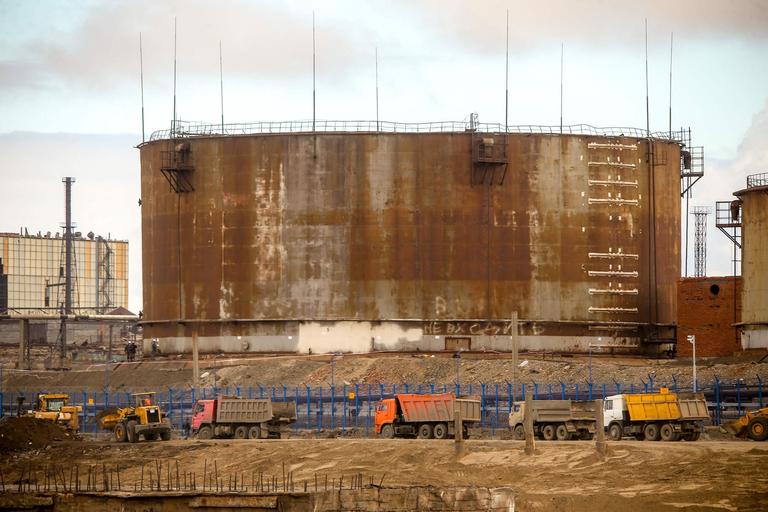
" Is everything okay in your head? "Vladimir Putin was angry with Vladimir Potanin, the extremely wealthy boss of Norilsk Nickel, owner of the collapsed reservoir. There is cause for anger because the reservoir at the source of the pollution has been in operation for 35 years and its infrastructure has not been checked since at least 2016 because the company that owns it claimed that the installation was being repaired. In order to understand the causes of this disaster, the Russian Investigation Committee announced the opening of three criminal investigations and already the head of the plant has been arrested and placed in pre-trial detention.
However, it is the melting of the permafrost that seems to be the main cause of the disaster. This is considered a major challenge in Russia because it weakens cities and the infrastructure, especially mining, gas and oil infrastructure, which has been built on it for decades. The Russian government considers this thaw in the Arctic, where the exploitation of natural resources is a strategic priority for the Kremlin, as a major risk with unpredictable consequences. According to a study published in December 2018 in Nature Communications, by 2050 it threatens up to 70% of Arctic infrastructure, including oil and gas fields, and 3.6 million people could be affected by this damage. On Friday 4 June, Russia ordered a complete verification of its high-risk infrastructures built on permafrost, which is weakened by climate change.
Climate bomb
The permafrost (pergelisol in English) refers to huge expanses of ground frozen all year round. It covers a good quarter of the land mass of the Northern Hemisphere, Russia, Canada and Alaska. The soils in these regions are composed of masses of pure ice that accumulate to thicknesses ranging from a few centimetres to several hundred metres.
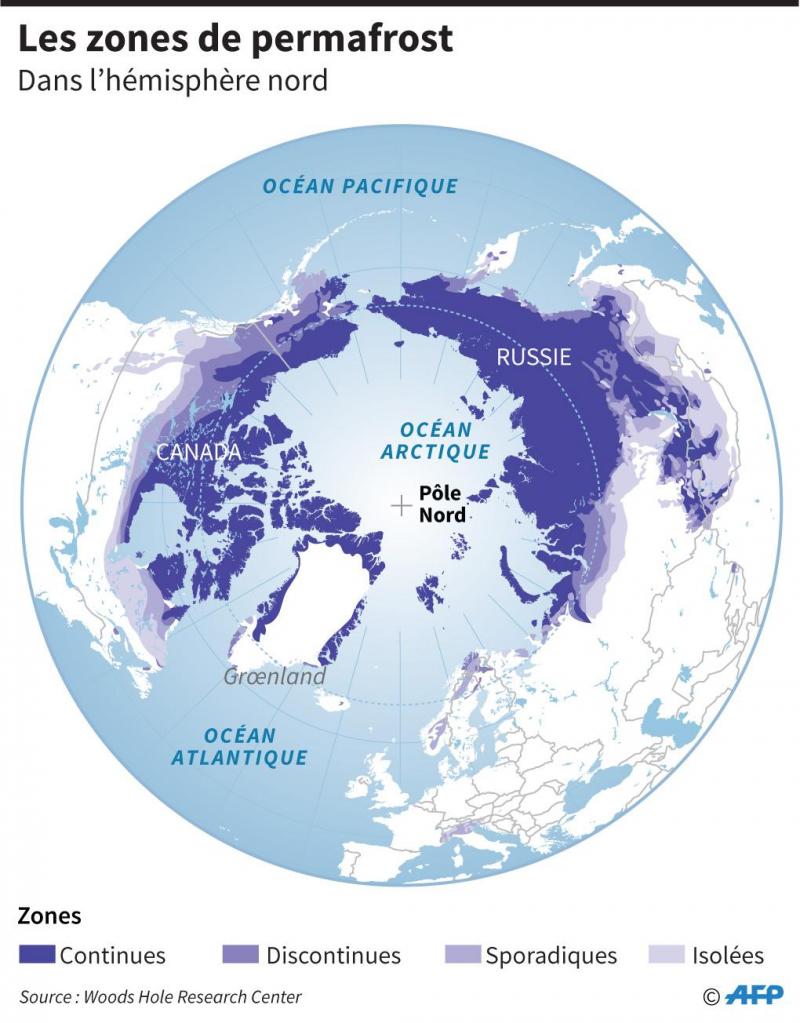 These permanently frozen soils contain 1.7 trillion tonnes of CO2 that have been trapped there for millennia as frozen organic matter - the remains of rotting plants and long-dead animals, sequestered in sediments and then covered by layers of ice. The figure of 1.7 trillion is twice the amount of carbon dioxide already in the atmosphere, the consequences of which for the present and future climate are known. Another telling comparison is that it is forty times the current annual CO2 emissions.
These permanently frozen soils contain 1.7 trillion tonnes of CO2 that have been trapped there for millennia as frozen organic matter - the remains of rotting plants and long-dead animals, sequestered in sediments and then covered by layers of ice. The figure of 1.7 trillion is twice the amount of carbon dioxide already in the atmosphere, the consequences of which for the present and future climate are known. Another telling comparison is that it is forty times the current annual CO2 emissions.
As temperatures rise, the permafrost heats up and begins to melt, gradually releasing the gases it had been neutralizing until then. And the phenomenon should accelerate, according to scientists, who describe a vicious circle: the gases emitted by the permafrost accelerate the warming, which in turn accelerates the melting of the permafrost. And when it comes to warming, the Arctic is currently breaking records, especially in Siberia, where much of the world's permafrost is located.
The world experienced its warmest May on record, the European Union's climate monitoring network said on Friday. But temperatures in Siberia soared 10 degrees Celsius (°C) above average last month. According to the Copernicus Climate Change Service (C3S), Western Siberia in particular has been unusually warm for several consecutive months. « The very large anomalies began in January, and since then the signal has been quite persistent. "says Freja Vamborg, C3S senior scientist, to AFP.
According to the report of the Intergovernmental Panel on Climate Change (IPCC) on oceans and the cryosphere, unveiled in September 2019, a "significant" melting of permafrost could occur by 2100 if CO2 emissions are not reduced, causing the release of tens or even hundreds of billions of tons of greenhouse gases.
Sanitary bomb
In addition to its climatic effects, the melting of the permafrost, which harbours sometimes forgotten bacteria and viruses, also poses a health threat. In the summer of 2016, a child died in Siberia from anthrax, a disease that has been extinct in the region for 75 years. For scientists, the origin of the disease was most likely due to the corpse thawing of reindeer that died of anthrax decades ago. Released, the deadly bacteria, which has been stored in the permafrost for over a century, has reinfected herds.
And the threat isn't limited to anthrax. As the climate has warmed due to climate change, this frozen layer has released strange organisms. Among them, one monster: Mollivirus sibericum. " One of a kind "says Jean-Michel Claverie, his genome is enormous, with more than 650,000 base pairs in his DNA, whereas there are only about ten in a virus like influenza or AIDS. Stranger still, this pandoravirus had resisted for 30 millennia under the ice without losing any of its infectious power!
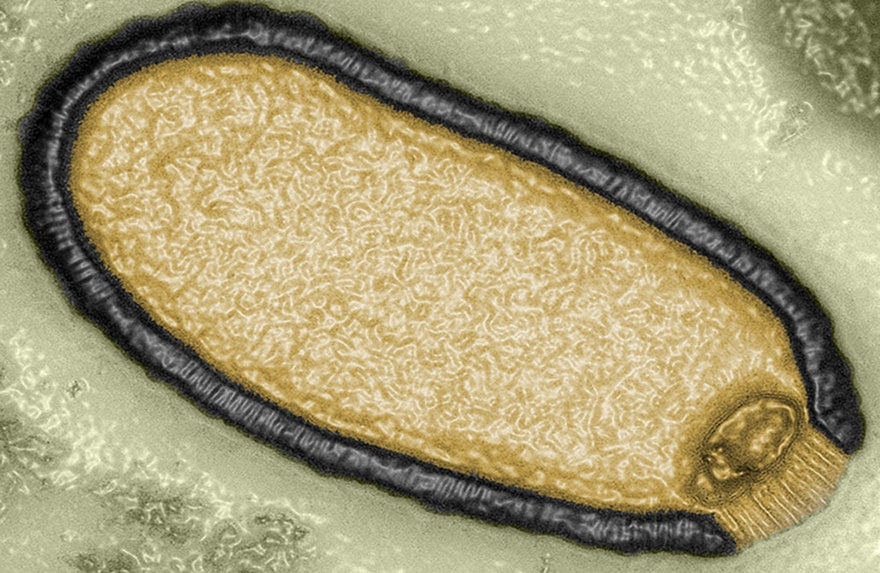
In these Arctic regions, which melting permafrost has made more accessible to the mining and oil industry, scientists warn that some of these viruses could one day awaken if humans stir up the subsoil too deeply. Researchers don't hesitate to say that they "resurrect".
This hypothesis is all the more chilling because these areas, which have long remained deserted, are now more accessible and attract covetousness. Their subsoil contains many minerals and hydrocarbons that were previously unexploited. Professor Claverie told on France Inter : " The permafrost is not going to melt over 30 metres very quickly, but it is already possible to dock, to install mines, large equipment that will be able to excavate the permafrost for kilometres in search of oil, gas and minerals. Millions of cubic metres of soil will be extracted and pockets that have not been excavated for a million years will come to the surface. "
He adds, just to make us a little more stressed: " It is this indirect side of global warming that is dangerous. Being able to get into places where no one was there before, to set up camps, to set up factories, is a real danger. Until now there were only desert areas; no one could be infected by a possible virus. But if you put people who are also going to be confined to places where you are going to extract this permafrost in quantity, it is true that, objectively, there is a risk that old terrors of the past will be resurrected. ".
Mercury bomb
CO2, viruses, and now a poison, mercury. A study published in 2018 in the magazine Geophysical Research Letters revealed that permafrost soils are the world's largest reservoir of mercury, storing almost twice as much mercury as all other soils, the ocean and the atmosphere combined. As temperatures rise, the thawing of permafrost could release a large amount of mercury that could affect ecosystems around the world. Mercury accumulates in aquatic and terrestrial food chains and has adverse effects on the neurological and reproductive health of animals.
" If everything stayed frozen, there would be no environmental problems, but we know that the Earth is getting warmer.... », a said the author of the study Paul Schuster, a hydrologist at the U.S. Geological Survey in Boulder, Colorado. « This discovery changes the whole rule of the game"
According to Edda Mutter, Scientific Director of Yukon River Inter-Tribal Watershed CouncilThe study found that the trapped mercury could seep into waterways and be transformed into methyl mercury, a powerful neurotoxin that can cause motor disorders and birth defects in animals. Such contamination could spread rapidly through the food chain, from micro-organisms to humans, the scientist fears. Mercury releases could have far-reaching global consequences. Mercury released into the atmosphere can travel great distances and affect communities and ecosystems thousands of kilometres from the site of release.
Strategic Bomb
The territories affected by permafrost extend along the coasts of the Arctic ice cap. In a few decades, the ice cap has lost almost half of its surface area. And it's not over yet. Scientists who observe the melting of the ice pack are alarmed; according to the calculations experts at the U.S. National Snow and Ice Data Center in Boulder, Colorado, the Arctic sea ice coverage has decreased by 13.2 % per decade in September of each year. Since satellite records began in 1979, the twelve lowest levels have all been recorded in the last twelve years. The lowest record was reached in 2012, with 3.39 million square kilometres.
These effects of global warming are a blessing for Vladimir Putin, who has high hopes for the opening of this road that will transform the geography of globalisation. Already, hundreds of ships of all kinds are crowding at the gates of this corridor. All you have to do is go to marinetraffic.com to observe, in a few clicks and in real time, a host of oil tankers, cargo ships, research vessels, fishing boats. There are even a few cruise ships that ply these waters.
Russia is not alone in seeing this opening as a boon to give new impetus to the once inhospitable but extraordinarily resource-rich lands of northern Russia. China also sees it as a way of extending its famous "Silk Road" and flooding the Western world with even more products and raw materials. By passing through the North, Chinese goods save 40 % of travel time compared to those using the Suez Canal. The Arctic is becoming the royal road for the container ships and tankers that are the lifeblood of the global economy.
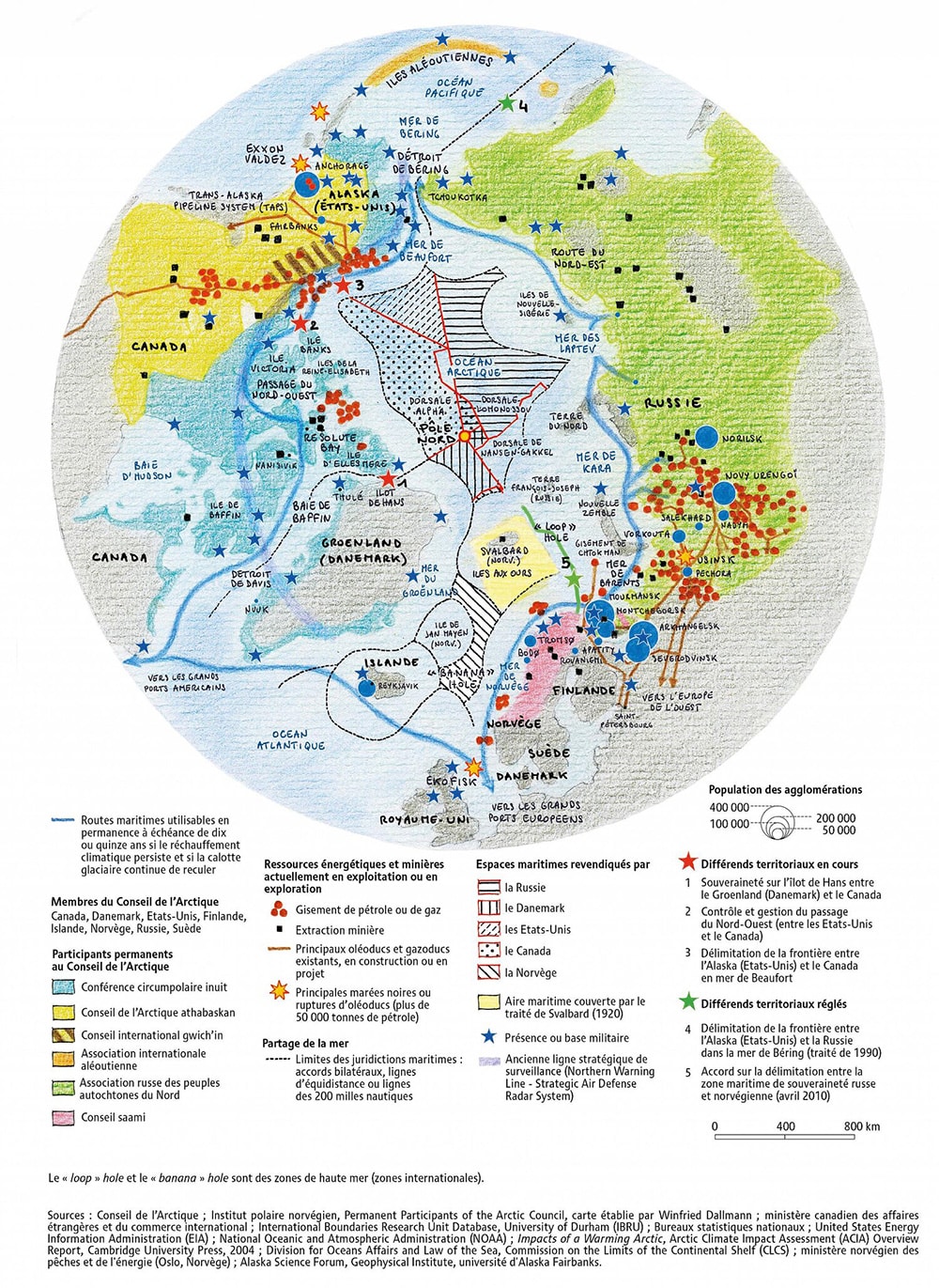
Until not so long ago, the Far North and Arctic regions were of interest primarily to explorers, scientists and local fishing communities. Today, Russia, Denmark, Canada, Norway and the United States are already asserting their rights - and other countries, such as China, are scrambling to fish, drill and cross. The region, which should be a "common good", is becoming an explosive zone of international tension. The Washington Post cites testimony before the US Senate by the former head of the US Pacific Naval Command, Admiral Harry Harris, currently US Ambassador to South Korea. He said, " Of particular note are Russia's efforts to strengthen its presence and influence in the High North. Russia has more bases north of the Arctic Circle than all the other countries combined, and is building more with distinctly military capabilities. "
This rush by the major powers with their armadas of tankers is worrying environmental protection associations, which fear industrial accidents and uncontrolled pollution threatening a hitherto relatively unspoiled ecosystem. With Arctic shipping routes increasingly used by merchant shipping, an ice-free Arctic Ocean could test the resilience and adaptability of marine mammals. Narwhals, walruses, bowhead whales and beluga whales are at high risk from shipping traffic. Scientists such as Donna Hauser point out in an study It has recently come to light that cetaceans that inhabit the Arctic are migratory animals that follow routes that have been established for generations. They are also loyal to certain feeding sites in highly productive waters. The Northwest Passage and the Northern Sea Route juxtapose these popular feeding grounds and fall migration routes. In addition, certain geographic areas form a bottleneck, causing ships and marine mammals to share a very limited territory. Baffin Bay, Bering Strait and Lancaster Sound are areas where the Northwest Passage directly encroaches on the range of marine mammal populations.
With global warming, the northern regions of the world are becoming part of strategies to conquer territories from nature. Regions that were once natural sanctuaries caught in the ice are becoming industrial nightmares. No lessons seem to have been learned from the damage caused by man's industrial voracity. The planet and especially the human species are threatened, but we continue to grow.

With AFP


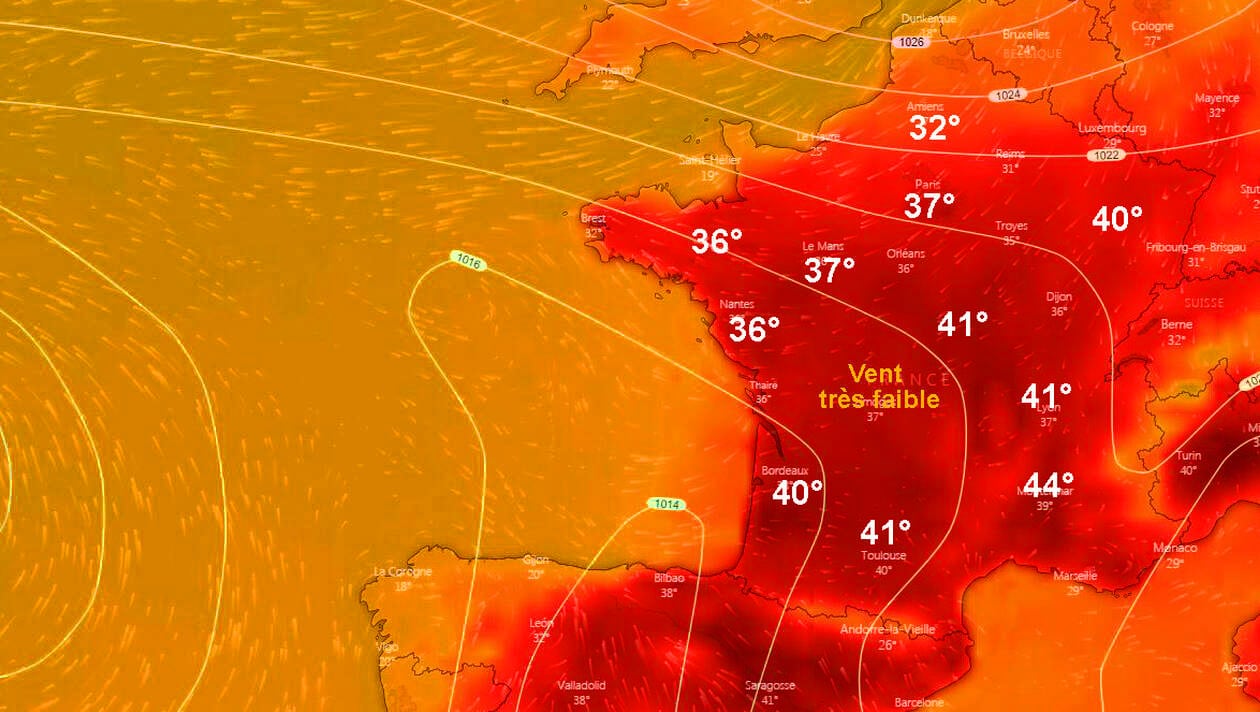

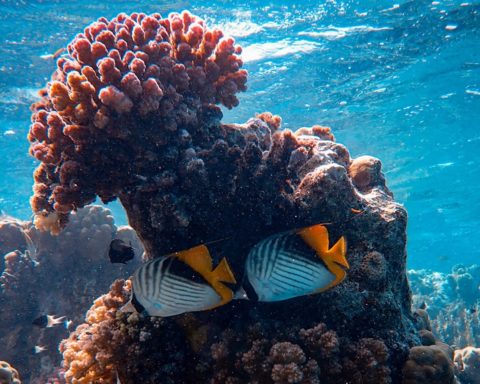
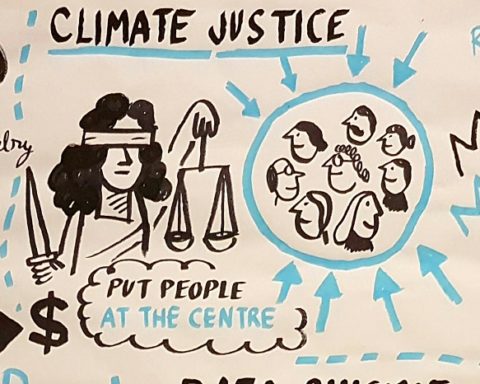
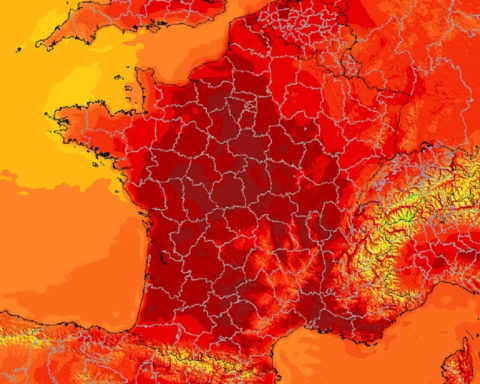






We'll never get out of this...